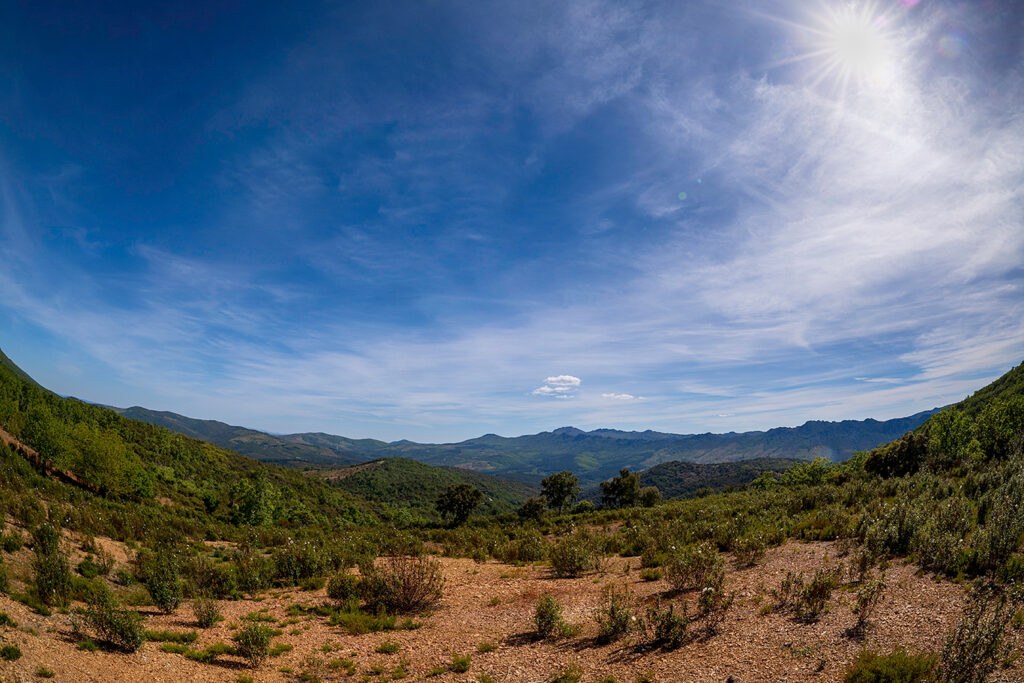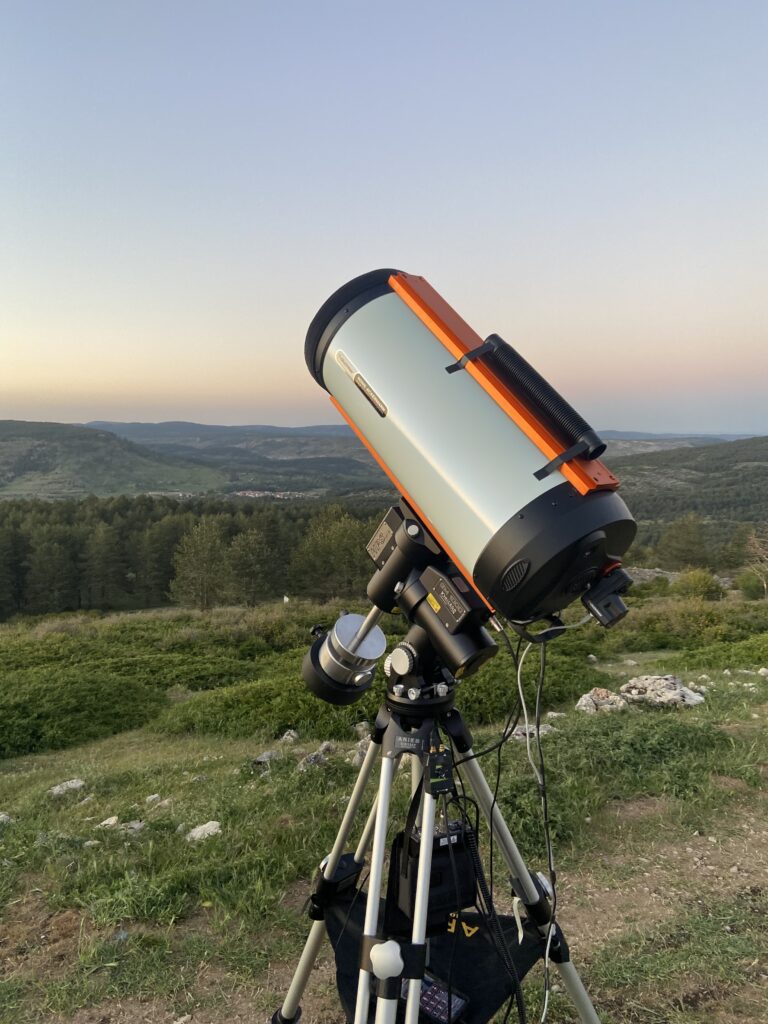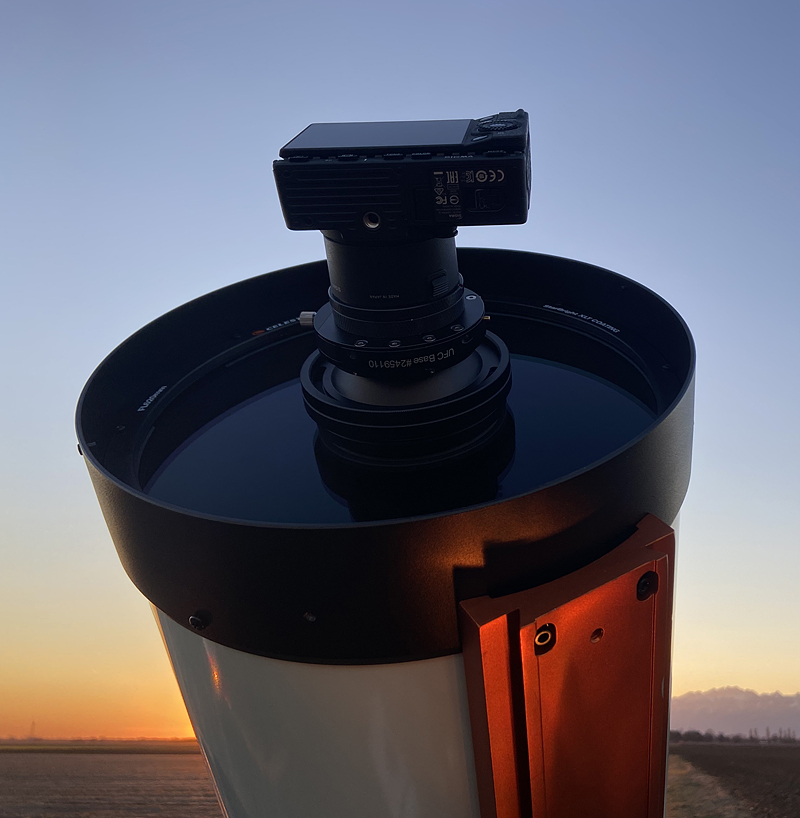SIGMA Blog: On the Road in Extremadura for Astrophotography
Together with the SIGMA 15mm F1.4 DG DN Diagonal Fisheye
Living by the Phases of the Moon and the Weather
When pursuing astrophotography seriously, one must inevitably align their activities with the lunar cycle. Contrary to what some may believe, this is not for esoteric reasons.
The new moon phase, devoid of moonlight that usually illuminates the night sky, offers the best conditions for capturing deep sky objects—celestial bodies beyond our solar system. Additionally, the right weather is essential, with clear, cloudless nights being ideal.
Moreover, these nights should be spent in locations with minimal light pollution. A glance at a light pollution map reveals that such places are unfortunately scarce in Europe.
All these components should ideally coincide, leading us to travel through various regions of Europe almost every month to photograph deep sky objects together.

Extremadura in Spain
Extremadura, a vast region in southwestern Spain, is well-known among nature photographers. This region boasts a rich variety of fauna and flora, with its birdlife being particularly impressive and fascinating.
Covering over 8.3% of Spain’s landmass, the region is quite extensive. However, with a population density of just 25 inhabitants per km², it accounts for only 2.6% of Spain’s population. To put it into perspective, just over one million people reside in an area larger than Switzerland or the Netherlands. Fewer people generally means less light pollution, making Extremadura an ideal location for astrophotography. This is where we found ourselves in May this year (2024).

A Fisheye as a Companion
This trip wasn’t just about capturing images with medium or long focal length telescopes. The new SIGMA 15mm F1.4 DG DN Diagonal Fisheye | Art was also in tow to photograph the Milky Way in its full majestic splendour and to capture some impressions of the enchanting landscape. A fisheye lens, with its 180° field of view, is perfect for capturing vast skies. But what else could it do?
Can the rugged, sometimes gentle nature, the colourful flower meadows, gnarled olive trees, lush greenery, and the magic of the landscape be captured with a fisheye lens? Spoiler alert: Yes, it can.
This lens invites creative captures of vastness and scale, making photography immensely enjoyable. Whether you use the fisheye effect subtly or prominently is a matter of personal preference. Most of our photos were taken with the intention of showcasing the fisheye effect. Beyond its impressive brightness and comfortable handling, the lens’s image quality, extending to the edges, was particularly remarkable.

Mountains, Flower Meadows, Goats, and Olive Trees
The landscape of Extremadura is characterised by rocky mountains, wide plains, high plateaus, and diverse vegetation. Colourful flower meadows, olive trees, and oak forests alternate with barren, rocky regions with sparse vegetation. The region is home to numerous bird species, including majestic vultures and vibrant bee-eaters. The distinctive “hup-hup” call of the Hoopoe provided the soundtrack to our tour, thanks to the many old trees that offer excellent habitats for these birds.
The photogenic nature of the bizarre olive trees was captivating. Anyone seeking unusual olive trees as photographic subjects could spend years in Extremadura. In warm temperatures, surrounded by butterflies and flowers, lying in the shade of a tree to photograph its crown or trunk is a relaxed and beautiful form of photography. The fisheye lens also excels in capturing close-ups of flora from unique perspectives.
The landscape is dotted with small villages, old houses with citrus trees at the doorstep, and farms with various animals. We stayed at one such farm: Finca Las Lucías, where the charming owner treated us to local cuisine and shared many insights about the region. The farm’s goats, providers of delicious goat cheese, also became amusing subjects for our fisheye.


Balancing Play and Duty
Despite our daytime adventures with the fisheye lens, the primary purpose of our trip was astrophotography. In May, the Milky Way is visible in the early morning hours, peaking around 4 a.m. In our latitudes, the galactic centre is most visible in June, but astronomical night may be limited to astronimcal dusk, with the sun potentially no lower than 18° below the horizon. In September, the Milky Way is visible before midnight, with the galactic centre reaching a maximum elevation of around 9°.
We found an ideal location on a hill above our farm. We scouted the area in daylight to determine the best composition for our Milky Way shots. The actual astrophotography took place between 4 and 5 a.m., while our telescopes captured deep-sky objects (Rho Ophiuchi) in the grassland below.
We used an external monitor for better focusing. The appearance or disappearence of the focus peak as faint stars came into or moved out of focus being the best guide, helped considerably by the bright F1.4 apperture. The lens’s MFL switch prevents accidental focus adjustments, a valuable feature for photography at night. The F1.4 aperture is perfect for starry sky photos, and the lens’s image quality, free of vignetting and aberrations, impressed us greatly.
For those serious about astrophotography, the SIGMA 15mm F1.4 DG DN Diagonal Fisheye | Art lens excels in star depiction. Stars reveal a lens’s quality, and this one passed the test with flying colours. Photographing the Milky Way, especially in Spain’s magnificent skies, was a delight.
Conclusion
This will certainly not be the last time we take this lens on an astrophotography expedition.












